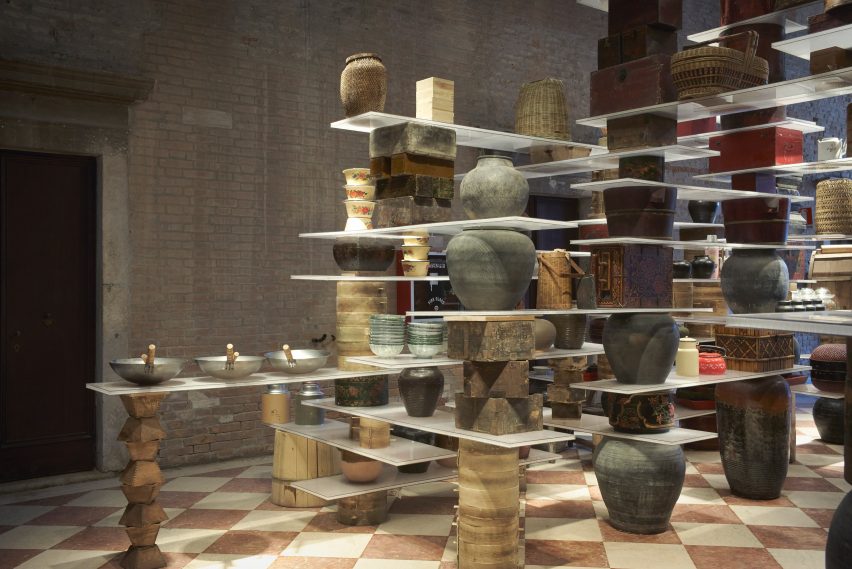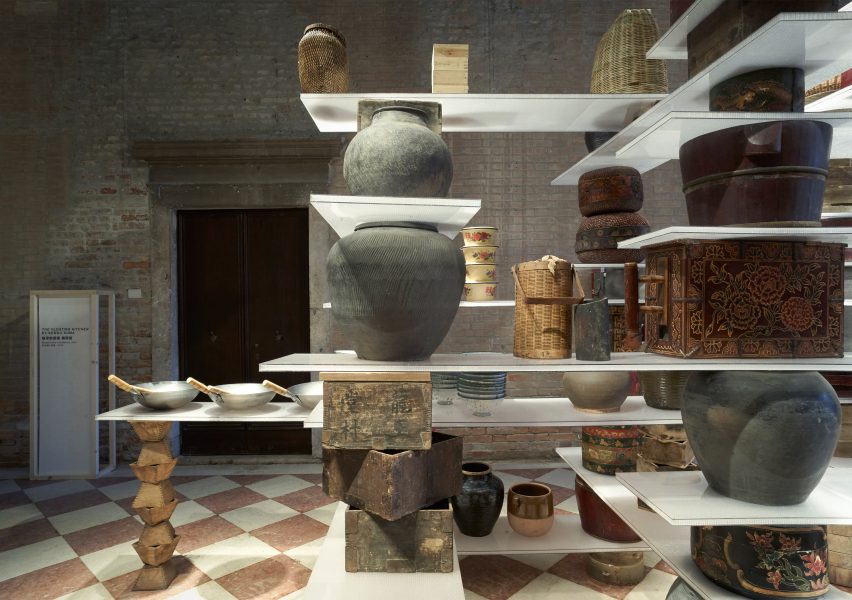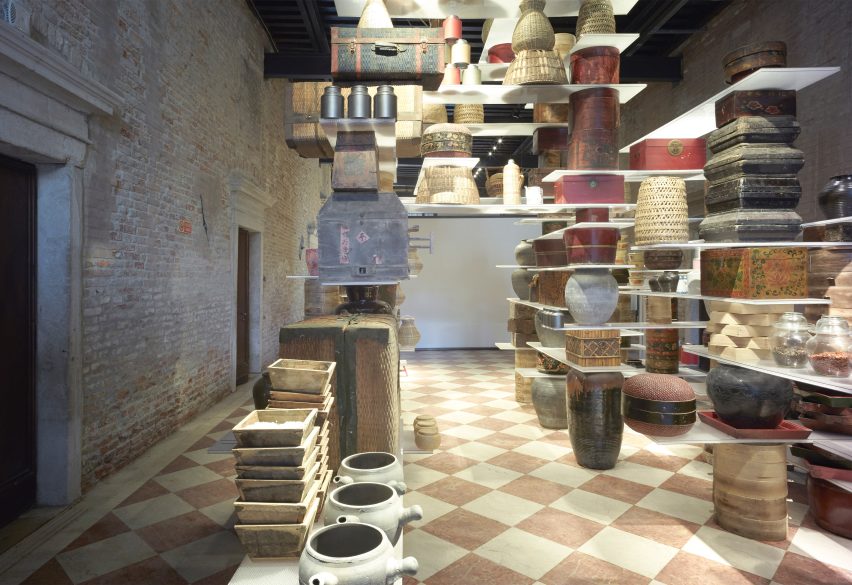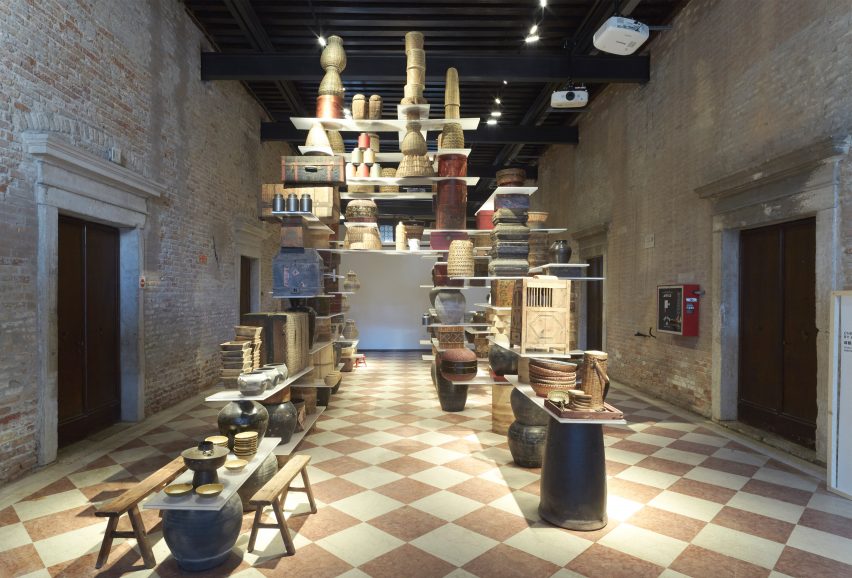Kengo Kuma designs kitchen built from pots, pans, baskets and utensils
Venice Architecture Biennale 2016: Japanese architect Kengo Kuma has created a concept kitchen where surfaces are precariously balanced over assorted types of kitchenware (+ slideshow).
Called The Floating Kitchen, the design brings together dozens of items found in the Chinese city of Chengdu.

These items – ranging from ceramic bowls and plates, to vases, wicker baskets and suitcases – form the supports for kitchen worktops and shelves at a variety of different heights.

Kengo Kuma was one of three designers asked to create a kitchen for the Kitchen Home Project, an event taking place at the Ca' Tron palazzo as part of the Venice Architecture Biennale exhibition Across Chinese Cities.
Curated by Beijing Centre for the Arts founder Weng Ling, the exhibition also includes a transparent kitchen by MVRDV and a design by media artist Au Yeung Ying Chai.

Sandwiched in between these two, Kuma's Floating Kitchen is intended as a striking alternative to the contemporary kitchen, with its minimal finishes and clutter-free surfaces.

The architect wanted his design to celebrate traditional foods and cooking paraphernalia.
He described the installation as an assemblage of "structuralism objects – a primitive condition where objects come in indirect contact with people, and only the intensive aggregation and flow of those objects stand out in relief".

Kuma has also recently unveiled a series of other forward-looking projects, including a vision for a house of the future and a concept for drawn-in-place architecture developed with University of Tokyo students.
The Floating Kitchen is on display until 30 September 2016.
Photography is by Julien Lanoo.